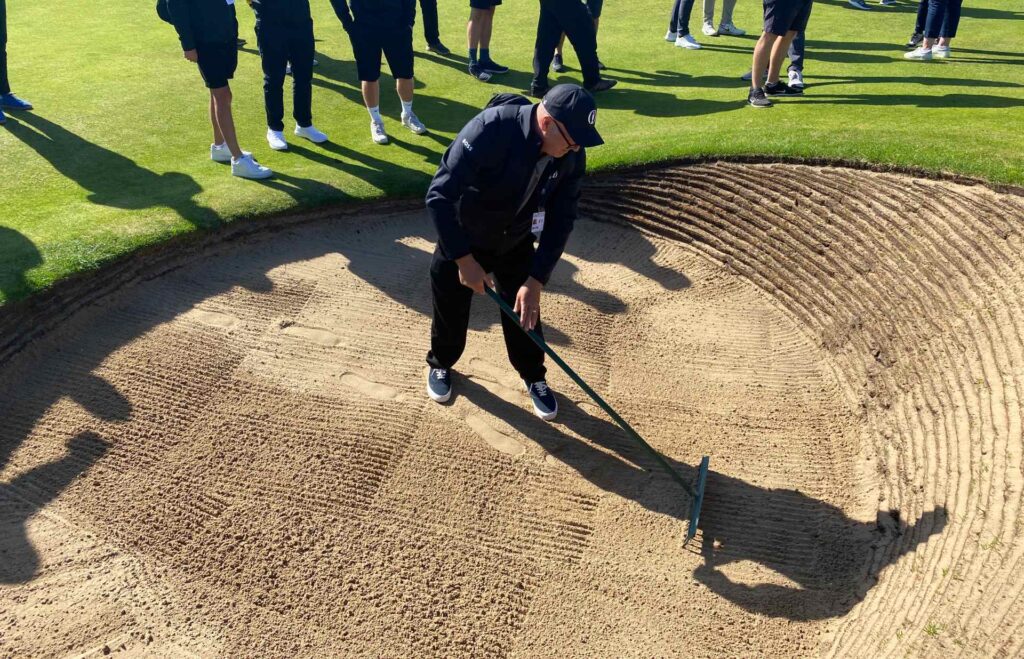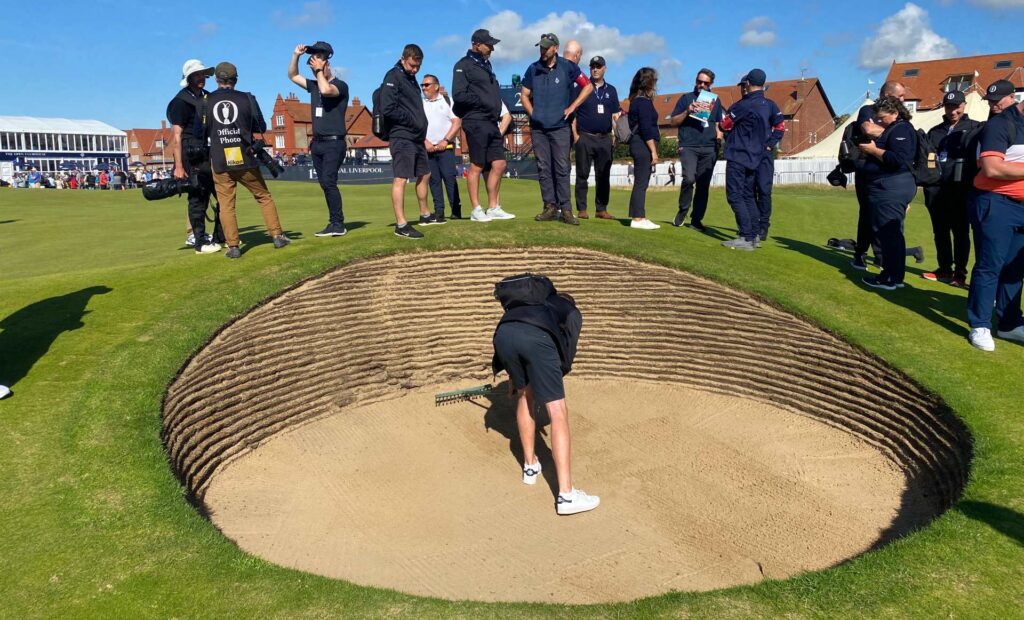
How to rake a bunker (Open style)
They demand the very best at The Open but what kind of detail is needed when raking a bunker to make it fit for professional play?
If your club message boards are any guide, a lesson in how to rake a bunker is one many of us could benefit from.
You’d think it was the hardest job in the world, given how lax some of us can be in our own competitions, but what is required at the other end of the scale?
At The Open, a support team put together by the British & International Golf Greenkeepers’ Association brings greenkeepers from all over the country to the championship to assist the host club crew.
A greenkeeper goes out with every match and tidies up the sand when players have extricated themselves from any of Hoylake’s 82 brutal bunkers.
But is making a bunker fit for a major championship such an onerous task, or are there some tips we could employ to make our own struggles with the sand a more ‘pleasurable’ experience?
BIGGA Open Support members were taken through the process of how to rake a bunker at The Open and here are some of the key takeaways…
How to rake a bunker at The Open
What are the R&A looking for?
The key thing during play is for the bunker to be smoothed back over, restored, and then for everyone to move on.
You might think there would need to be a complete re-rake of a bunker each time a player has finished in it, but it is simply a case of removing strike marks, footprints, and getting out of the way. Its all about working quickly, but not rushing, and getting the job done properly.
On a morning before play begins
On a links course, there can be clumps of sod in the bunkers – as balls hit revetted faces – so the first task is to remove that turf from the hazard.
If a bunker needs re-raking completely, greenkeepers will try and find the bottom row of the bunker and then, with the smooth side of the rake, sweep round the outside.
Demonstrating this to members of BIGGA’s Open support team, first assistant Chris Trimble said the team were looking for a consistent level around the bunker so it followed the whole revetted row.
Sand is then pushed up to that row, with Trimble adding it needed to be “dished ever so slightly” so the ball will roll down inches back into the bunker.
Standing in the centre of the bunker and, with the sharp side of the rake, they then move round in a clockwise direction – raking up to the face and back again to the centre.

The requirement is for the sand to be consistent across the bunker.
For fairway bunkers, the rake marks would ideally be striped down the line of the hole. For greenside bunkers, those marks would move to the middle of the green. To achieve that, they pick a spot, get a close as possible to the revetting, and then slowly move back.
On smaller bunkers, greenkeepers would look to carry out two passes. It’s three in a larger bunker.
Throughout the process, a big key is not to see too much in the way of ridging and keeping all the lines created by the rake as even as possible and going towards the target.
During play
Unless there’s been a complete meltdown out on the course, greenkeepers aren’t going into this kind of detail when a day’s play at The Open is under way.
But many of the processes remain the same. So, in a greenside bunker, it’s still looking to the middle of the green, picking the spot, pushing forward slightly with the rake, and then raking back until it is smooth – while trying to keep all the lines as consistent as possible.
Will you take any of these skills into your own bunker raking at your club? Could all members do with a tutorial on raking bunkers? Let me know with a tweet.
- NOW READ: Did the R&A bend on Hoylake’s brutal bunkers?
- NOW READ: Hoylake’s ‘brutal bunkers’ are the stars of The Open – and we love it!
- NOW READ: Everything you need to know about the 151st Open
Steve Carroll

A journalist for 25 years, Steve has been immersed in club golf for almost as long. A former club captain, he has passed the Level 3 Rules of Golf exam with distinction having attended the R&A's prestigious Tournament Administrators and Referees Seminar.
Steve has officiated at a host of high-profile tournaments, including Open Regional Qualifying, PGA Fourball Championship, English Men's Senior Amateur, and the North of England Amateur Championship. In 2023, he made his international debut as part of the team that refereed England vs Switzerland U16 girls.
A part of NCG's Top 100s panel, Steve has a particular love of links golf and is frantically trying to restore his single-figure handicap. He currently floats at around 11.
Steve plays at Close House, in Newcastle, and York GC, where he is a member of the club's matches and competitions committee and referees the annual 36-hole scratch York Rose Bowl.
Having studied history at Newcastle University, he became a journalist having passed his NTCJ exams at Darlington College of Technology.
What's in Steve's bag: TaylorMade Stealth 2 driver, 3-wood, and hybrids; TaylorMade Stealth 2 irons; TaylorMade Hi-Toe, Ping ChipR, Sik Putter.










